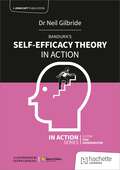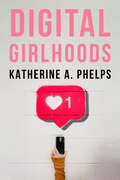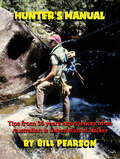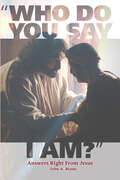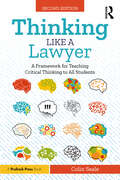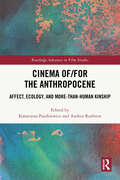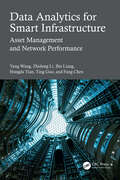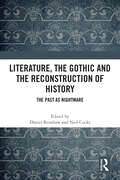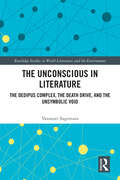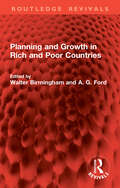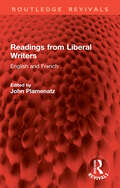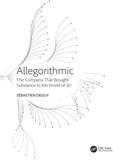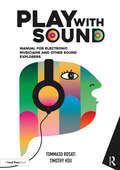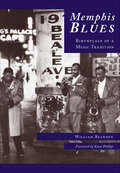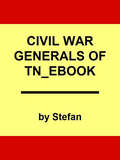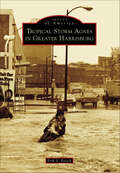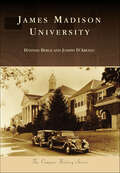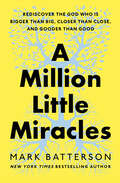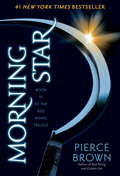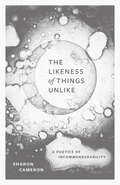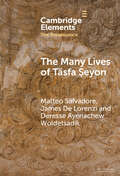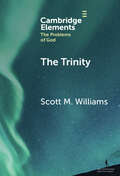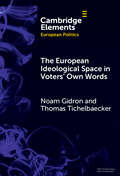- Table View
- List View
Bandura's Self-Efficacy Theory in Action
by Neil GilbrideBandura's theory of self-efficacy is one of the most important discoveries in modern psychology that has transformed how we understand human behaviour. Through years of research across different disciplines, we now know that our self-efficacy is a central concept in how we behave and is critical in determining the capacity that students have to shape their own lives. The belief that our behaviour can yield a positive result within a specific domain explains many experiences that teachers face in the classroom - why, in the face of good teaching, students still don't attempt the work; why, in some lessons, students are seen to work harder than in others; why some students struggle to bounce back from failure and why student behaviour can still present a challenge. Dr Neil Gilbride CPsychol guides the reader in how we can take action to raise student self-efficacy and, subsequently, the agency that students feel in taking control of their lives and studies. Specifically, the book will explore the application of self-efficacy to three key areas - how we design our instruction, how we design practice and how we influence the behaviour of our pupils within our settings. The book interweaves insights from research with how it might look in the classroom. Succinct summaries and case studies from a range of practitioners will enable all readers to raise the self-efficacy of their students in their own classrooms and beyond.
Digital Girlhoods
by Katherine A. PhelpsTween girls in America today are growing up on social media, posting selfies and sharing “stories.” In Digital Girlhoods, Katherine Phelps emphasizes tween girls’ agency on social media vis-à-vis identity formation, content creation, and community building. When a tween girl posts a video on YouTube asking the world, “Am I pretty or ugly?”, she is also asking, “Who am I?” This content makes visible the pitfalls and potentials of these tweens creating their own digital narratives—and it asks us to take them seriously. Featuring in-depth interviews with a cross section of tween girls, Phelps allows them to give meanings to their relationships with social media and their peers in their own words. As tween girls embody and negotiate the many contradictions of American girlhoods through social media participation (for example, the “Pretty or Ugly” YouTube trend), Phelps asks, how are tween girls living and experiencing girlhoods in the digital age? The processes of experiencing and enacting tweenhood and girlhood online are explicitly gendered. Digital Girlhoods thoughtfully considers what tween girlhoods look and feel like in America today.
Hunter’s Manual
by Bill PearsonPresenting an essential almanac for every hunter, this book invites you to share in the outdoor adventures of an Australian whose passion for hunting with his rifle has taken him far beyond his native shores. Join him by the fireside as he imparts techniques and secrets that will enhance your own quests for trophy game. Experience the humour in his self-deprecating tales, highlighting the lighter side of this unique sport. Most importantly, become captivated by the magnificent wildlife and the skills necessary to immortalize them both on film and as prized additions to your trophy room and freezer. This book is not just a guide; it’s an invitation to the heart of hunting and the celebration of the natural world.
Who Do You Say I Am?: Answers Right From Jesus
by John BraunIf someone asked you, \u201cWho is Jesus?\u201d what would you say? When Jesus asked his disciples that same question, Peter said, \u201cYou are the Christ, the Son of the Living God\u201d (Matthew 16:16). Some people would echo Peter\u2019s bold confession during Jesus\u2019 ministry, but others doubted and criticized Jesus. How did Jesus defend himself and assert the truth? As Christians today, we encounter situations similar to those faced by Jesus\u2019 disciples. Some people believe in Jesus; others doubt and criticize him and his followers. How do we respond? Discover the incredible answer as you join author John Braun in these thought-provoking and comforting devotions based on gospel accounts from the final year of Jesus\u2019 earthly ministry. In this book, you\u2019ll learn how to defend the truth in love—with answers right from Jesus.
Thinking Like a Lawyer: A Framework for Teaching Critical Thinking to All Students
by Colin SealeCritical thinking is the essential tool for ensuring that students fulfill their promise. But, in reality, critical thinking is still a luxury good, and students with the greatest potential are too often challenged the least. This best-selling book: Introduces a powerful but practical framework to close the critical thinking gap Gives teachers the tools and knowledge to teach critical thinking to all students Empowers students to tackle 21st-century problems Teaches students how to compete in a rapidly changing global marketplace Colin Seale, a teacher-turned- attorney-turned-education-innovator and founder of thinkLaw, uses his unique experience to introduce a wide variety of concrete instructional strategies and examples that teachers can use in all grade levels. Individual chapters address underachievement, the value of nuance, evidence-based reasoning, social-emotional learning, equitable education, and leveraging families to close the critical thinking gap. In addition to offering examples for Math, Science, ELA, and Social Studies, this timely, updated second edition adds a variety of new examples and applications for Physical Education, Fine Arts, Foreign Language, and Career and Technical Education.
Cinema of/for the Anthropocene: Affect, Ecology, and More-Than-Human Kinship (Routledge Advances in Film Studies)
by Andrea Ruthven Katarzyna PaszkiewiczCinema of/for the Anthropocene sheds new light on the question of how films can allow us to resituate ourselves within what is known today as the Anthropocene. The authors address this question through a variety of disciplines and theoretical perspectives, from film and cultural studies, new materialisms, critical posthumanism and animal studies, critical race theory and Indigenous media studies, to gender and sexuality studies, with a primary focus on films produced in the United States and Canada.The volume moves beyond the mere acknowledgment of the devastating damage inflicted during the Anthropocene to think about new ways of inhabiting the world through concepts such as affect, response-ability, and more-than-human kinship. The writers in this collection respond to its invitation by addressing a range of genres and modes, thus complicating the apocalyptic discourses which have typically been central to the studies on the Anthropocene: in addition to dystopian films, the volume discusses animated films, Hollywood biopics, climate change documentaries, experimental film, comedy, horror sci-fi, as well as disease thriller and survival film. Taken together, the chapters offer cross-disciplinary readings of the cinema of/for the Anthropocene, showing ways in which it can help us re-orient our thinking to make sense of the current age and address the planetary-scale environmental catastrophe.This volume will appeal to researchers and students in film studies, cultural studies, and the burgeoning field of environmental humanities.
Data Analytics for Smart Infrastructure: Asset Management and Network Performance
by Yang Wang Zhidong Li Bin Liang Hongda Tian Ting Guo Fang ChenThis book presents, for the first time, data analytics for smart infrastructures. The authors draw on over a decade’s experience working with industry and demonstrating the capabilities of data analytics for infrastructure and asset management. The volume gives data-driven solutions to cover critical capabilities for infrastructure and asset management across three domains: 1) situation awareness 2) predictive analytics and 3) decision support. The reader will gain from various data analytic techniques including anomaly detection, performance evaluation, failure prediction, trend analysis, asset prioritization, smart sensing and real-time/online systems. These data analytic techniques are vital to solving problems in infrastructure and asset management. The reader will benefit from case studies drawn from critical infrastructures such as water management, structural health monitoring and rail networks. This groundbreaking work will be essential reading for those studying and practicing analytics in the context of smart infrastructure.
Literature, the Gothic and the Reconstruction of History: The Past as Nightmare
by Neil Cocks Daniel Renshaw AndIn the Gothic, nothing stays buried for long. Since its inception in the mid-eighteenth century, the Gothic imagination has been concerned with the pasts of the societies from which it emerged. This collection, featuring contributions from archivists, historians and literary critics, examines how horror fiction and the wider Gothic mode have engaged with the constructed conception of "history".From Victorian nightmares of Jurassic jungles to ghost stories on the contemporary stage, the contributors adopt varied and innovative approaches to consider how the Gothic has created, complicated and sometimes subverted historical narratives. In doing so, these works blur the distinctions between the "historical record" and creative endeavour, undermine linear and sequential understandings of the progress of time and dissolve temporal boundaries. The collection explores a variety of Gothic forms including drama, poetry, prose, illustration, film and folklore, and it draws on classic texts such as Wuthering Heights and Dracula, as well as less familiar works, including Reynolds’ The Mysteries of London and Baldini’s Mal’aria.Literature, the Gothic and the Reconstruction of History will be invaluable to students and scholars interested in the confluences of literary and historical endeavour, the creation and depiction of historical constructs in popular culture, and Gothic horror in its myriad forms.
The Unconscious in Literature: The Oedipus Complex, the Death Drive, and the Unsymbolic Void (Routledge Studies in World Literatures and the Environment)
by Yasunori SugimuraThis book aims to investigate the unconscious in literature using Freudian and Lacanian psychology to analyse the unconscious in a range of literary works. The works of Thomas Hardy, William Golding, and Iris Murdoch are discussed in the first chapter through eight. Based on the argument in these chapters, this volume considers the environmental problem by examining the unconscious in the literary texts, including poetry, in the light of philosophers and critics on ecology. There is a focus on the Oedipus complex, the death drive, and the unsymbolic void, as they have much relevance to each other in the unconscious as to one’s relationship with others, primarily with the mother, and underlie the plots and leitmotifs of the literary texts discussed. The author carefully examines the complicated relationship between the infringement of the pleasure principle, and the unsymbolic void, and how they are depicted as various phases of nature.
Planning and Growth in Rich and Poor Countries (Routledge Revivals)
by A. G. Ford Walter BirminghamOriginally published in 1966, this book was written at a time when economists realized that rapid growth in developing nations could not be achieved without comprehensive planning and that no economy could be left to grow of its own accord without the danger of major fluctuations in economic activity and long periods of stagnation. Written by a team of academic economists who combined specialized knowledge of the theory of economic growth with world-wide experience of its practical applications, this volume provides an intelligent analysis of the problems of economic growth which faced nations that had embarked on the planning of their economies such as the UK, India, Ghana, Sierra Leone and New Zealand.
Readings from Liberal Writers: English and French (Routledge Revivals)
by John PlamenatzOriginally published in 1965, this volume provides selections of writings by English and French historians, philosophers and political scientists around the themes of freedom and opportunity; the functions of government; the spirit and machinery of free government; the freedom of thought and speech. The selections include Burke’s speeches, Locke’s Treatise of Civil Government, Mill on Liberty, Tocqueville on Democracy in America and Tawney on Equality. At a time in the 21st Century when freedom and democracy are under threat across the world, this book with its explanatory introduction by John Plamenatz has an enduring relevance.
Allegorithmic: The Company That Brought Substance to the World of 3D
by Sébastien DeguyAllegorithmic: The Company That Brought Substance to the World of 3D explores the journey of Allegorithmic, the software company behind Substance, a suite of tools that revolutionized texturing in computer graphics. This engaging narrative by Sébastien Deguy, the visionary founder and CEO of the company, chronicles the growth of Allegorithmic from its inception as a small startup to becoming a leader in digital content creation, pivotal in shaping the visual aesthetics of video games and films.The book highlights key technological innovations and strategic decisions that propelled the company forward, offering a detailed look at the challenges and triumphs of developing cutting-edge software solutions while building a team attached to its strong values and passion for digital artists.Key Features: Provides a detailed history of Allegorithmic, a company at the forefront of technological innovation in procedural textures and 3D content. Covers significant technical ground, discussing complex environments, procedural textures, and software development, while also delving into the creative aspects of these technologies. Spans the growth of a startup into a major player in the tech industry, providing insights into business strategies, team building, and international expansion. Reflects on the cultural shifts within the company and the broader industry, offering lessons on adapting to technological advancements and market demands. Ideal for tech enthusiasts, artists, and entrepreneurs, this deep book provides a comprehensive overview of the creativity and perseverance required to influence and lead in the tech industry.
Global Politics: A New Introduction
by Maja Zehfuss Jenny Edkins Thomas GregoryGlobal Politics: A New Introduction engages directly with questions that those coming to the study of world politics bring with them. From that innovative starting point, it explores key issues through a critical and inquiring perspective, presenting theoretical ideas and concepts in conjunction with a global range of historical and contemporary case studies.Revised and updated throughout, the fourth edition offers examples engaging with the latest developments in global politics: the climate crisis and anthropocentrism, Indigenous experiences and thinking, racism and the rise of xenophobia, artificial intelligence, citizen journalism, global health and pandemic response and drone warfare.Global Politics:• examines most significant issues in global politics – poverty, development, colonialism, human rights, gender, inequality, race, war, peacebuilding, security, violence, nationalism, authority and what we can do to change the world;• offers chapters written to a common structure ideal for teaching and learning and features a key question, an illustrative example, general responses and broader issues;• integrates theory and practice throughout the text, drawing on international relations, political theory, postcolonial studies, sociology, geography, peace studies and development.This exciting, up-to-date and ground-breaking textbook is essential reading for all those concerned about global politics.
Play with Sound: Manual for Electronic Musicians and Other Sound Explorers
by Tommaso Rosati Timothy HsuPlay with Sound: Manual for Electronic Musicians and Other Sound Explorers offers a thorough introduction to music technology by centering on curiosity and creativity in the exploration of the fundamentals of sound.With color illustrations throughout, this book covers topics regarding audio software, acoustical principles, electroacoustic systems, audio processing, sound synthesis, and communication protocols. Each chapter features creative exercises that utilize live electronics, production, and composition to unearth the theories presented and develop technical and musical creativity. Additionally, interactive graphics and lesson slides are available as digital resources to enhance learning inside and outside the classroom.Play with Sound is an ideal textbook for beginners of all backgrounds looking for an introduction to music technology, production, and live electronics. By engaging with this book, everyone, including traditional students as well as those learning outside the traditional classroom setting, will be able to expand their musical skills and professional opportunities into the world of music technology.
Memphis Blues: Birthplace of a Music Tradition
by William BeardenThe blues was born in the Mississippi Delta, and since that fateful night in 1903 when W. C. Handy heard the mournful sound of a pocketknife sliding over the strings of an acoustic guitar and the plaintive song of a long-forgotten musician in the hot night of Tutwiler, Mississippi, the blues has been on a journey around the world. From the cotton fields and jukejoints of the Delta, up Highway 61 to Memphis�s Beale Street, St. Louis, the Southside of Chicago, England, and points beyond, the blues is America�s unique form of music. Blues is incisive in its honesty, elemental in its rhythm,and powerful in its almost visceral sensation. Nearly every style of popular music has its roots in the blues. Muddy Waters said it best: �The blues had a baby, and they called it rock and roll.� Memphis has become the heart of the blues world, with a re-born Beale Street acting as its spiritual center. People come from the world over to experience its beat, savor its emotion, and feel its power. In the end . . . �it ain�t nothin� but the blues.�
Civil War Generals of Tennessee
by Randy BishopFrom James Patton Anderson to Felix Zollicoffer, author Randy Bishop, a native Tennessean, offers compelling portraits of the sons of a state regarded by many as the most torn asunder by the War Between the States. This collection brings together biographies of the fifty-one Confederate and Union generals born in Tennessee as well as those with significant ties to the state. Each entry focuses on the major military contributions of the individuals—no matter their affiliations—and also teases out the most intriguing aspects of their civilian life, particularly how they fared after the war. With fascinating details, including the men&’s relationships before the divisiveness of war drove intruded, Bishop provides an insight into lives that have rarely been seen as a whole. Arranged in alphabetical order for ease of reference, the work includes such luminaries as Nathan Bedford Forrest and Leonidas Polk, while also detailing the contributions of many lesser-known figures, including Samuel Powhatan Carter and Otho French Strahl. Each entry spans approximately five pages and provides, as the author states, &“insight into the contributions of selfless men who offered their best, in years of their lives as well as time, that could have been spent with their families.&”
Tropical Storm Agnes in Greater Harrisburg
by Erik V. FasickTropical Storm Agnes, along with the unprecedented flooding which resulted from it, is arguably the most significant event to have transpired in the Harrisburg area in the last 150 years. Over the course of June 21 and June 22, 1972, Agnes drenched the region with more than a foot of rain. As a result, the Susquehanna River rose to record-breaking levels and backed into the already overwhelmed feeding creeks and streams. In Harrisburg, armed National Guardsmen patrolled the vacant streets and set up checkpoints to enforce a curfew and deter looting. Surrounded by floodwaters, row homes near the governor�s mansion burned, and firefighters waded through chest-high water as they attempted to reach the blaze. Entire neighborhoods in both Shipoke and Steelton were ultimately lost due to the high waters entering homes. To this day, Agnes continues to serve as the measuring stick by which all storms since have been judged.
James Madison University (Campus History)
by Hannah BergeAnyone strolling through James Madison University's bucolic Bluestone area, which is grounded by the iconic Wilson Hall, will feel the educational journeys of past students resonating through the air. Founded in 1908 as a women's college, James Madison University was originally called the State Normal and Industrial School for Women at Harrisonburg and had an opening enrollment of 150 students. Since then, James Madison University has undergone several name changes and has a current enrollment of over 20,000 students. "The Madison Experience" is one that involves a commitment to learning and a fun and open spirit. This retelling of campus history seeks to capture some of the defining moments and cherished memories that have shaped so many Dukes.
A Million Little Miracles: Rediscover the God Who Is Bigger Than Big, Closer Than Close, and Gooder Than Good
by Mark BattersonThe New York Times bestselling author of Win the Day reminds us of the millions of miracles God performs every day and inspires us to live with a clearer sense of identity and purpose.Think you&’ve never experienced a miracle? With all due respect, you have never not. In fact, you are one!There never has been—and there never will be—anyone else like you. That isn&’t a testament to you. It&’s a testament to the God who created you. Your fingerprint, eyeprint, and voiceprint are unlike anyone else&’s. Simply put, you matter to God.Most of us take everyday miracles for granted, including the one that stares back at us in the mirror. It&’s time to take them for gratitude. Why is that so important? Because whatever you don&’t turn into praise turns into pride. The miracle of life becomes mundane. We get so wrapped up in our own little world, we end up worshipping a god who looks like us, acts like us, and thinks like us. It&’s no wonder we&’ve lost our wonder. But there is a way to recapture holy curiosity!In A Million Little Miracles, New York Times bestselling author Mark Batterson reveals three miraculous truths that awaken us to carpe wonder for the Creator and His creation:1. God Is Bigger Than We Think—we can rest in His wisdom and strength2. God Is Closer Than We Realize—we never have to do life alone3. God Is Better Than We Imagine—we can reclaim our childlike wonderA million little miracles are waiting to be discovered, including the miracle called you.
Morning Star: Book 3 of the Red Rising Saga (Red Rising Series #3)
by Pierce Brown#1 NEW YORK TIMES BESTSELLER • Red Rising thrilled readers and announced the presence of a talented new author. Golden Son changed the game and took the story of Darrow to the next level. Now comes the exhilarating next chapter in the Red Rising Saga: Morning Star.ITW THRILLER AWARD FINALIST • &“[Brown&’s] achievement is in creating an uncomfortably familiar world of flaw, fear, and promise.&”—Entertainment WeeklyDarrow would have lived in peace, but his enemies brought him war. The Gold overlords demanded his obedience, hanged his wife, and enslaved his people. But Darrow is determined to fight back. Risking everything to transform himself and breach Gold society, Darrow has battled to survive the cutthroat rivalries that breed Society&’s mightiest warriors, climbed the ranks, and waited patiently to unleash the revolution that will tear the hierarchy apart from within. Finally, the time has come. But devotion to honor and hunger for vengeance run deep on both sides. Darrow and his comrades-in-arms face powerful enemies without scruple or mercy. Among them are some Darrow once considered friends. To win, Darrow will need to inspire those shackled in darkness to break their chains, unmake the world their cruel masters have built, and claim a destiny too long denied—and too glorious to surrender.Praise for Morning Star&“There is no one writing today who does shameless, Michael Bay–style action set pieces the way Brown does. The battle scenes are kinetic, bloody, breathless, crazy. Everything is on fire all the time.&”—NPR &“Morning Star is this trilogy&’s Return of the Jedi. . . . The impactful battles that make up most of Morning Star are damn near operatic. . . . It absolutely satisfies.&”—Tordotcom &“Excellent . . . Brown&’s vivid, first-person prose puts the reader right at the forefront of impassioned speeches, broken families, and engaging battle scenes . . . as this interstellar civil war comes to a most satisfying conclusion.&”—Publishers Weekly (starred review) &“A page-turning epic filled with twists and turns . . . The conclusion to Brown&’s saga is simply stellar.&”—Booklist (starred review)Don&’t miss any of Pierce Brown&’s Red Rising Saga:RED RISING • GOLDEN SON • MORNING STAR • IRON GOLD • DARK AGE • LIGHT BRINGER
The Hot Zone: The Terrifying True Story of the Origins of the Ebola Virus (Large Print Bks.)
by Richard PrestonThe bestselling landmark account of the first emergence of the Ebola virus. Now a mini-series drama starring Julianna Margulies, Topher Grace, Liam Cunningham, James D'Arcy, and Noah Emmerich on National Geographic.A highly infectious, deadly virus from the central African rain forest suddenly appears in the suburbs of Washington, D.C. There is no cure. In a few days 90 percent of its victims are dead. A secret military SWAT team of soldiers and scientists is mobilized to stop the outbreak of this exotic "hot" virus. The Hot Zone tells this dramatic story, giving a hair-raising account of the appearance of rare and lethal viruses and their "crashes" into the human race. Shocking, frightening, and impossible to ignore, The Hot Zone proves that truth really is scarier than fiction.
The Likeness of Things Unlike: A Poetics of Incommensurability
by Sharon CameronA study of the incommensurable, often discordant elements that define major works of American literature. In Sharon Cameron’s essays, a magnetic constellation gathers works of Emerson, Whitman, Dickinson, Cather, and Stevens—each manifesting in its own terms “the likeness of things unlike”—to form a loose commonality in a strain of American writing in which incommensurable elements can’t be integrated and can’t be separated. The Likeness of Things Unlike is concerned with discordant elements of an aesthetic work and argues that these elements refigure the aesthetic wholes whose integrity they apparently violate. These intertwined, subversive elements are challenges to literary systems and are essentially philosophical in their rethinking of categories, and thus go beyond the aesthetic particulars that exemplify them. Cameron is known for rigorously and brilliantly connecting artistic achievement to radical ways of thinking. Georg Lukcás describes the essayist as one who “adapts himself to the essay’s ‘smallness’ of form—the eternal smallness of the most profound work of the intellect in [the] face of life.” With The Likeness of Things Unlike Cameron powerfully demonstrates Lukács’s remarkable insight.
The Many Lives of Täsfa Ṣeyon: An Ethiopian Intellectual in Early Modern Rome (Elements in the Renaissance)
by Matteo Salvadore James De Lorenzi Deresse Ayenachew WoldetsadikThis Element examines the life and legacy of the sixteenth-century Ethiopian intellectual Täsfa Ṣeyon. It reconstructs his formative years in the Horn of Africa and his diasporic life in the Holy Land and Italian peninsula, where he emerged as a prominent intermediary figure at Santo Stefano degli Abissini, an Ethiopianmonastery within the Vatican. He became a librarian, copyist, teacher, translator, author, and community leader, as well as a prominent advisor to European humanist scholars and Tridentine Church authorities concerned with the emerging field of philologia sacra as it pertained to Ethiopian Orthodox (täwaḥedo) Christianity. The Element reconstructs his wide-ranging contacts with the Roman Curia and emerging orientalist academy, and then scrutinizes his editio princeps of the Ge'ez Gospels. A final section traces his modern influence, erasure, and rediscovery by later generations of European, Ethiopian, and Eritrean intellectuals.
The Trinity (Elements in the Problems of God)
by Scott M. WilliamsThe doctrine of the Trinity, proclaimed by Christians through the Nicene-Constantinople creed, is foundational to traditional Christian belief and worship of God. But is this doctrine logically coherent? How can there be three divine persons (Father, Son, and Holy Spirit), each is God, and yet there is only one God? This is a fundamental question for philosophers, but theologians have additional questions. This Element addresses philosophical and theological issues concerning the Trinity: Hermeneutical and Logical problems, Personal Pronouns, Monarchy, Equality, the Greek vs. Latin filioque debate, Real Relations, Unity of Action, Self-Knowledge in the Trinity, and Simplicity. Based on my recent rediscovery of the sixth ecumenical council's (Constantinople III) clarifications of Trinitarian doctrine, this Element introduces Conciliar Trinitarianism and shows how it responds to the issues, including a resolution to the fundamental logical question. It also compares Conciliar Trinitarianism with Miaphysite, neo-Sabellian, Social, and other models of the Trinity.
The European Ideological Space in Voters' Own Words (Elements in European Politics)
by Noam Gidron Thomas TichelbaeckerThere is a broad consensus that the ideological space of Western democracies consists of two distinct dimensions: one economic and the other cultural. In this Element, the authors explore how ordinary citizens make sense of these two dimensions. Analyzing novel survey data collected across ten Western democracies, they employ text analysis techniques to investigate responses to open-ended questions. They examine variations in how people interpret these two ideological dimensions along three levels of analysis: across countries, based on demographic features, and along the left-right divide. Their results suggest that there are multiple two-dimensional spaces: that is, different groups ascribe different meanings to what the economic and cultural political divides stand for. They also find that the two dimensions are closely intertwined in people's minds. Their findings make theoretical contributions to the study of electoral politics and political ideology.
